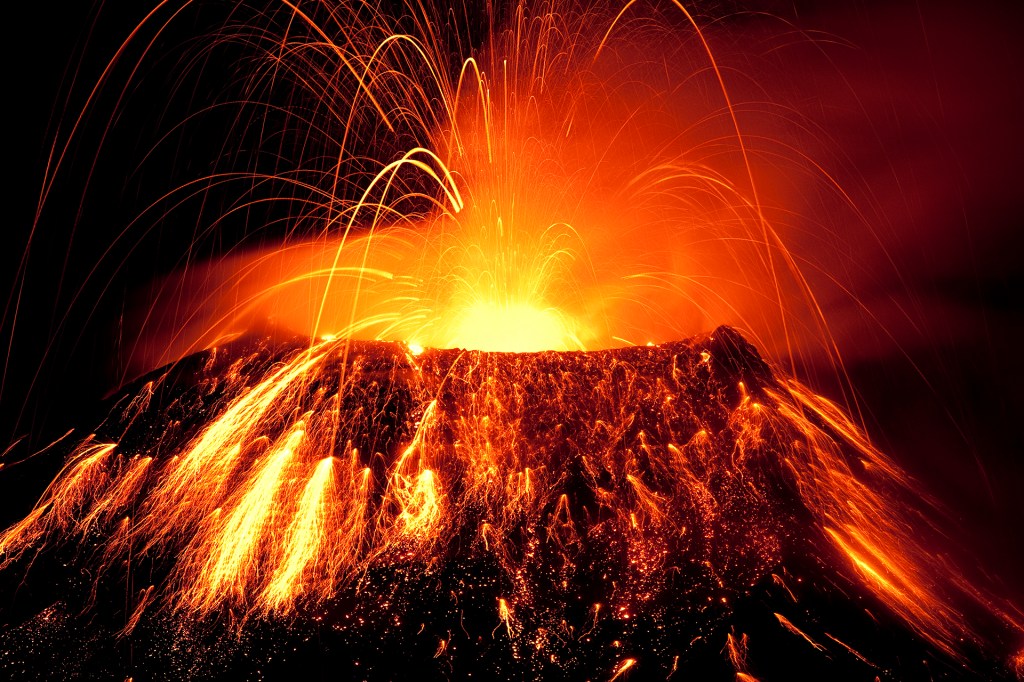Volcanoes

Volcanoes are geological features on Earth's surface that result from the eruption of magma from beneath the Earth's crust. Magma, which is molten rock, along with gases and other volatile substances, erupts through openings in the Earth's crust, creating various landforms and releasing tremendous amounts of energy.
Key components of a volcano include:
Magma Chamber: This is a reservoir beneath the Earth's surface where magma collects and accumulates. The magma is generated through the melting of rock within the Earth.
Vent: A vent is the opening through which magma, gases, and other volcanic materials are expelled to the surface during an eruption. Vents can take various forms, such as a central crater or fissures along the flanks of the volcano.
Crater: A crater is a depression at the summit of a volcano, often formed during explosive eruptions. It can be relatively small or large, depending on the size of the eruption.
Lava Flow: Lava is the molten rock that reaches the Earth's surface during an eruption. It can flow as rivers of molten rock, covering the surrounding landscape as it cools and solidifies.
Pyroclastic Flow: These are fast-moving, extremely hot mixtures of volcanic gases, ash, and fragmented rock that can travel down the slopes of a volcano at high speeds, causing significant destruction.
Volcanoes can be classified into various types based on their shapes, eruption styles, and the types of lava they produce. Common types include shield volcanoes, stratovolcanoes (composite volcanoes), and cinder cone volcanoes.
Volcanic activity is a natural and dynamic process that plays a crucial role in the Earth's geology, contributing to the formation of new land, shaping landscapes, and influencing the planet's atmosphere and climate. While many volcanoes are dormant or extinct, some are still active, posing potential hazards to nearby communities. Scientists closely monitor volcanic activity to understand and mitigate potential risks.
Thank you,